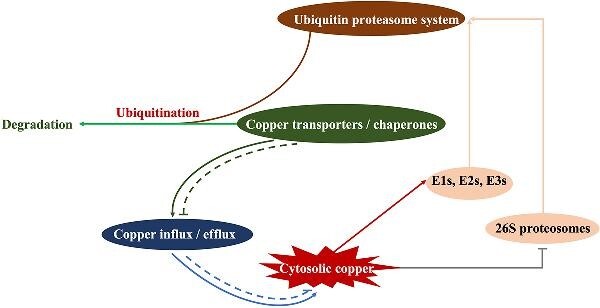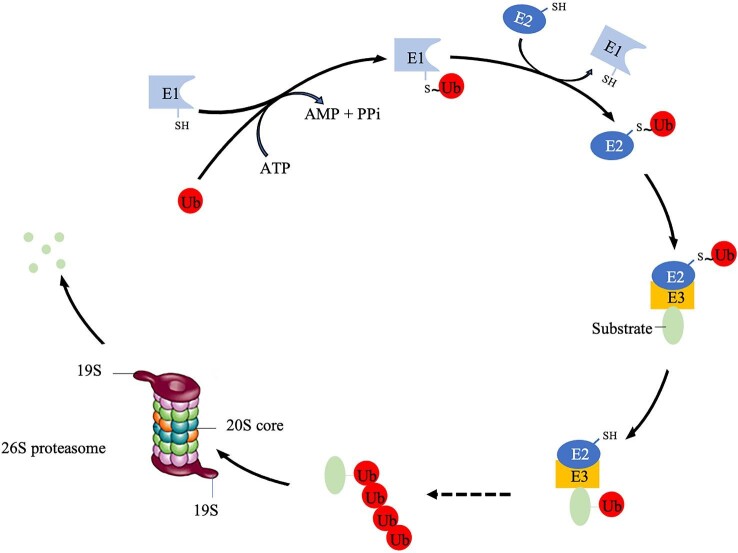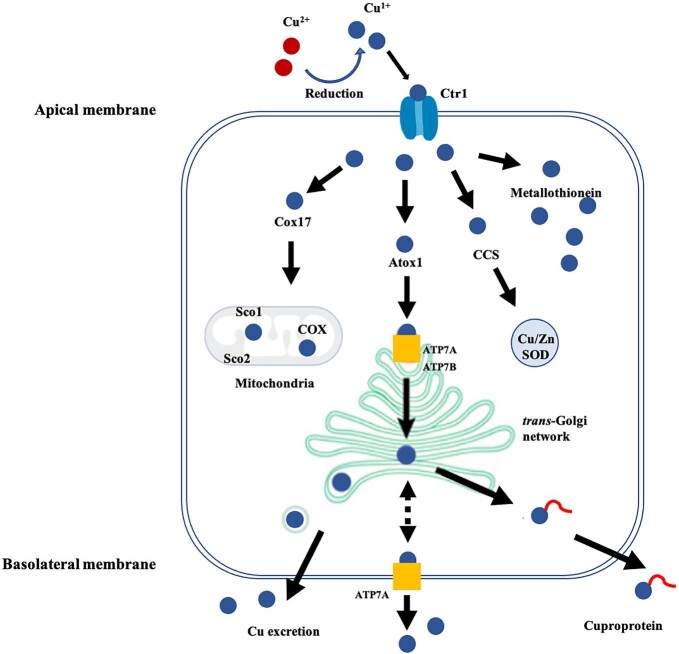铜稳态与泛素蛋白酶体系统。
IF 2.9
3区 生物学
Q3 BIOCHEMISTRY & MOLECULAR BIOLOGY
引用次数: 0
摘要
铜作为几种铜依赖酶的辅助因子参与许多生理途径和重要的生物过程。考虑到对铜的需求及其潜在的毒性,细胞内的铜水平受到严格控制。人体铜稳态紊乱的特征是铜超载(Wilson病)或铜缺乏(Menkes病)。细胞铜水平的维持涉及大量的铜转运体和铜伴侣。最近,越来越多的证据表明,泛素蛋白酶体系统(UPS)的成分参与了这些蛋白质的翻译后调控,这表明它们可能在维持铜稳态中发挥作用。细胞铜水平也可能影响UPS的活动,表明铜稳态和UPS是相互依赖的。铜稳态和UPS对正常脑功能的完整性至关重要,虽然神经退行性疾病和UPS抑制/铜稳态失调之间的单独联系已被广泛报道,但越来越多的证据表明,这两个网络可能协同促进神经退行性疾病的发生。在这里,我们回顾了铜和UPS在阿尔茨海默病、帕金森病和肌萎缩侧索硬化症的发展中的作用,并讨论了铜转运蛋白/伴侣蛋白与UPS组分之间的遗传相互作用。本文章由计算机程序翻译,如有差异,请以英文原文为准。



Copper homeostasis and the ubiquitin proteasome system.
Abstract Copper is involved in many physiological pathways and important biological processes as a cofactor of several copper-dependent enzymes. Given the requirement for copper and its potential toxicity, intracellular copper levels are tightly controlled. Disturbances of human copper homeostasis are characterized by disorders of copper overload (Wilson’s disease) or copper deficiency (Menkes disease). The maintenance of cellular copper levels involves numerous copper transporters and copper chaperones. Recently, accumulating evidence has revealed that components of the ubiquitin proteasome system (UPS) participate in the posttranslational regulation of these proteins, suggesting that they might play a role in maintaining copper homeostasis. Cellular copper levels could also affect the activity of the UPS, indicating that copper homeostasis and the UPS are interdependent. Copper homeostasis and the UPS are essential to the integrity of normal brain function and while separate links between neurodegenerative diseases and UPS inhibition/copper dyshomeostasis have been extensively reported, there is growing evidence that these two networks might contribute synergistically to the occurrence of neurodegenerative diseases. Here, we review the role of copper and the UPS in the development of Alzheimer’s disease, Parkinson’s disease, and amyotrophic lateral sclerosis, and discuss the genetic interactions between copper transporters/chaperones and components of the UPS.
求助全文
通过发布文献求助,成功后即可免费获取论文全文。
去求助
来源期刊

Metallomics
生物-生化与分子生物学
CiteScore
7.00
自引率
5.90%
发文量
87
审稿时长
1 months
期刊介绍:
Global approaches to metals in the biosciences
 求助内容:
求助内容: 应助结果提醒方式:
应助结果提醒方式:


